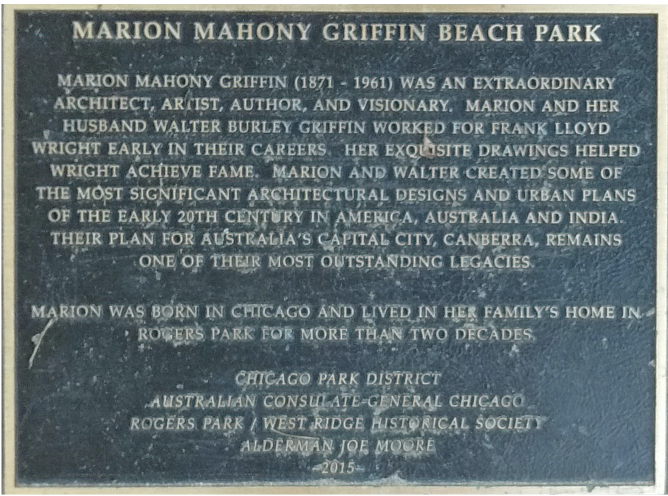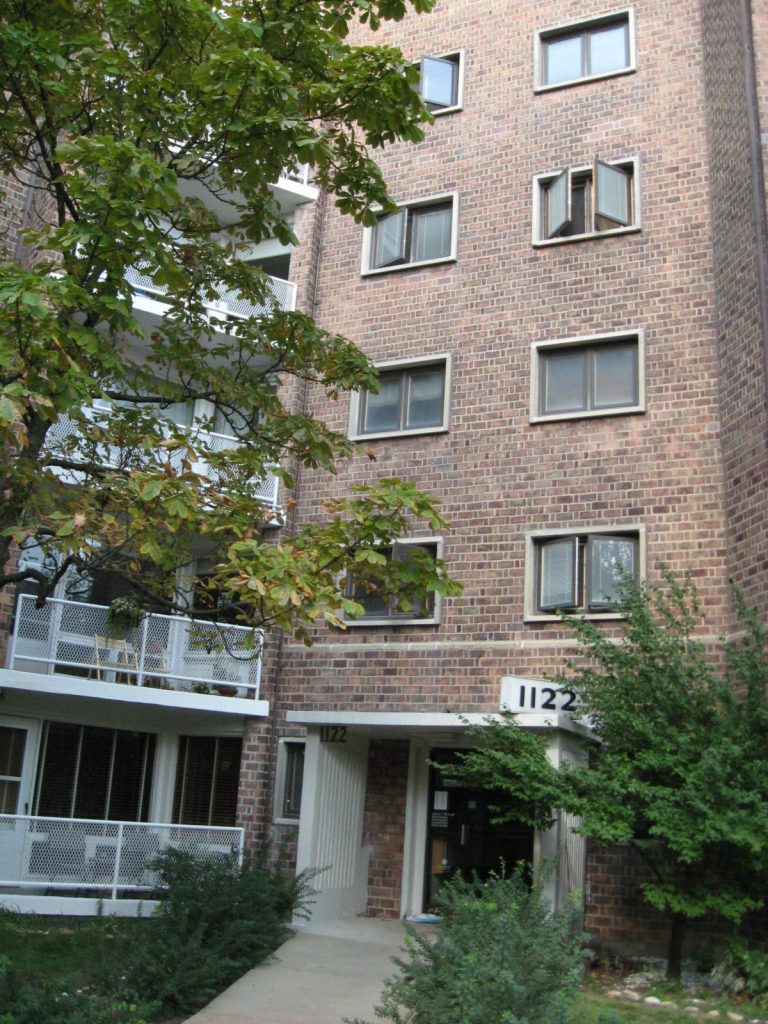When people think of women architects, they might know about architects like the 2011 MacArthur Fellow Jeanne Gang, who designed Aqua Tower, the Nature Boardwalk at Lincoln Park Zoo, and many other notable works. But decades before she came to prominence, several women with Chicago connections were entering the field of architecture long before it was common, or even acceptable. Below are two of those women with Chicago connections whose careers likely served as an inspiration to other women of later generations.

Marion Mahony Griffin (1871-1961) was born in Chicago and moved to Winnetka with her family following the Chicago Fire. Educated at MIT, she was the second woman to graduate with a degree in architecture. Following her graduation, she returned to Chicago, and became the first woman to be licensed in that profession in Illinois. She first worked for her male cousin at his architectural firm. About a year later, she was hired by Frank Lloyd Wright. She joined his Oak Park studio and collaborated with him for 14 years. Among the projects she worked on while employed by Wright was the All Souls Unitarian Church in Evanston (1903), which was demolished in 1960. She also completed houses on Millikin Place in Decatur that Wright began before he left for Europe, including the E.P. Irving House; the Robert Mueller House; and the Adolph Mueller House. In or about 1914, Mahony Griffin moved to Australia with her husband, architect Walter Burley Griffin. They were in practice together there until Walter’s death in 1937. She finished several of his commissions before returning to Chicago a few years later. She also completed two murals at Armstrong Elementary School in Chicago, which were restored in 1997. A founding member of the Chicago Arts and Crafts Society, and a member of the Chicago Architectural Club and the Illinois Chapter of AIA (American Institute of Architects), Marion Mahony Griffin died in Chicago in 1961. In 2015, a beachfront park, formerly known as Jarvis Beach, was renamed in her honor.
Learn more:
https://dna.bwaf.org/architect/griffin-marion-mahony
https://www.nytimes.com/2008/01/01/arts/design/01maho.html

Georgia Louise Harris Brown (1918-1999) was born in Topeka, Kansas. After attending Washburn University, she moved to Chicago where she took a summer class with Mies van der Rohe. She later returned to her home state, where she attended the University of Kansas, receiving a bachelor of science in architecture in 1944, becoming the first African American woman to earn that degree from that university. Returning to Chicago the following year, she began working at the firm of Kenneth Roderick O’Neal, an architect and structural engineer, who had also studied with Mies van der Rohe. In 1949, Georgia Louise Harris Brown received her architecture license and moved to the firm of Frank J. Kornacker Associates. While there, she developed structural calculations for a number of Chicago projects, including Mies van der Rohe’s Promontory Apartments, as well as the Lunt Lake Apartments at 1122 W. Lunt; Prairie Court Apartments; the apartment building at 860 Lake Shore Drive; Prairie Court Apartments; and East Dentistry, Medicine Pharmacy Building at the University of Illinois. In 1953, Harris Brown moved to Brazil and spent the rest of her working life there, practicing architecture until returning to the United States in the mid-90s.
Learn more:
https://www.landmarks.org/women_built_type/georgia-louise-harris-brown
https://pioneeringwomen.bwaf.org/georgia-louise-harris-brown
